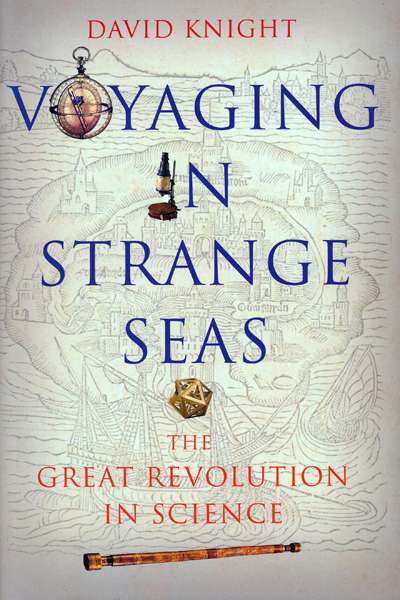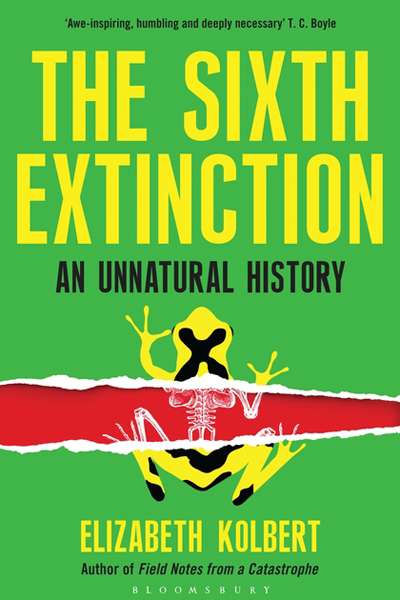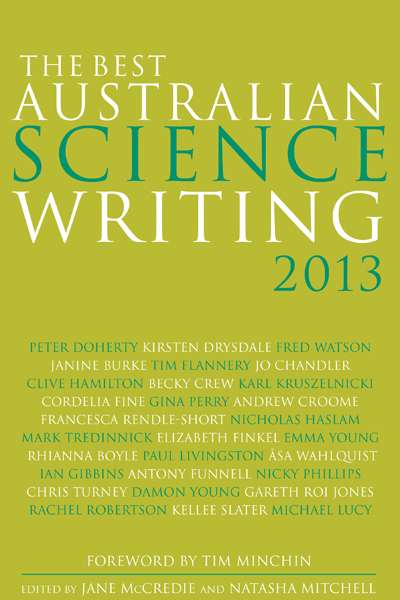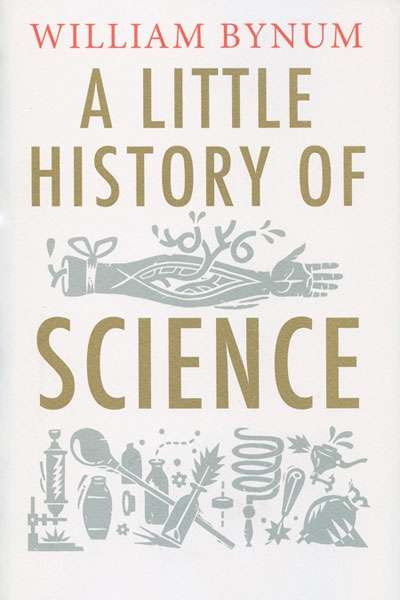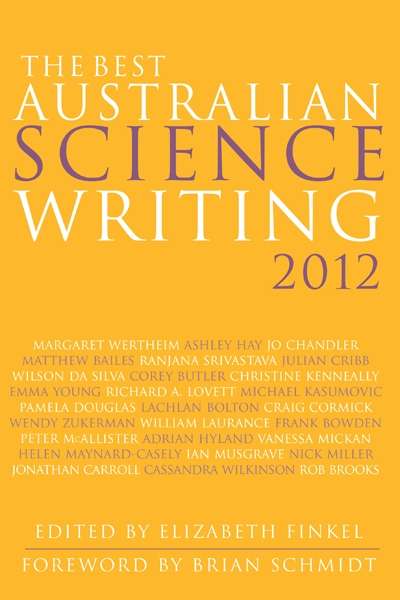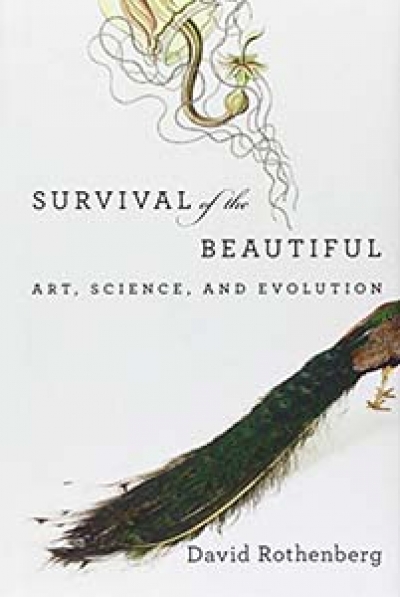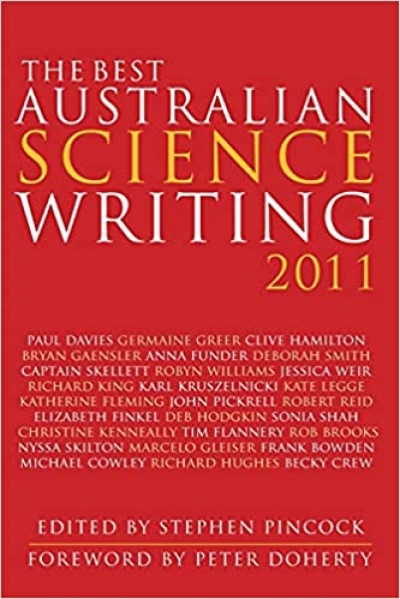Science and Technology
Voyaging in Strange Seas: The great revolution in science by David Knight
Science may well have revolutionised our world, but David Knight finds ‘revolution’ to be an inexact metaphor for the ‘chancy, many stranded story’ he describes. He explores models from biography, with associated concepts of infancy, adolescence, and maturity, before settling on voyages of exploration and discovery. This choice is inspired in part by Newton’s self-portrait of playing on the shore before a great ocean of undiscovered truth, and Wordsworth’s subsequent poetic expansion of Newton ‘Voyaging through strange seas of Thought, alone’ for all eternity. Indeed, voyaging in strange seas provides a much more resonant and nuanced metaphor than the more common (and perhaps more marketable) revolutionary subtitle.
... (read more)The Sixth Extinction: An Unnatural History by Elizabeth Kolbert
When the world changes faster than species can adapt, many fall out,’ writes Elizabeth Kolbert towards the end of her study on the mounting wave of extinction we are living through – and causing. The list of species dispatched by humans, directly or indirectly, is growing every day, yet Kolbert isn’t merely ringing alarm bells or giving a dour post-mortem. As the book’s subtitle suggests, she is interested in the history of extinction itself, from the very concept (which isn’t nearly as old as you might think) to its most dramatic examples to date.
... (read more)The Best Australian Science Writing 2013 edited by Jane McCredie and Natasha Mitchell
All scientists are writers. Science only exists in the written form. What is not written is not published, is not accepted, is not knowledge, and does not exist. It is written science that is scrutinised, peer-reviewed, and cited – nothing else matters but to ‘publish or perish’. Scientific articles, in all their clever, compacted, content-laden complexity, may well be impenetrable to all but the most specialist reader, but this does not mean they are poorly written. Articles are extraordinarily difficult to craft; writing them is the hardest and most intellectually challenging aspect of scientific practice. Evidence – the experimental result or the novel observation – may well lie at the heart of science, but until this evidence is written up and published it remains an unpolished gem which cannot be appreciated or understood. Through the medium of the written word, science has taken us to new worlds. Charles Bazerman argues that ‘scientific writing is one of the more remarkable of human literary accomplishments … [and has] literally helped us move mountains and to know when mountains might move on their own’.
... (read more)An unsuspecting reader might guess that this book belongs to the disreputable genre of psychobiography. Beginning with Sigmund Freud’s analysis of Leonardo da Vinci (1910), which explored themes of unconscious homosexuality and maternal attachment, biographers have attempted to make sense of individual lives with the aid of psychological theory, most often of a psychoanalytic stripe.
... (read more)Did you know that the Great Wall of China cannot be seen from space; or that Arabic numbers (1, 2, 3) came from India; or that Descartes thought up letters (a, b, c, and x) for use in algebra; or that William Bateson coined the word ‘genetics’? Did you know that there are five million trillion trillion bacteria on earth – give or take a few?Every few pages William Bynum gives you a choice factoid that’s Quite Interesting – as long as you remember to write it down straight away before it fades. Reading this Little History right through is like sitting in a Chinese restaurant with one of those long menus and ordering a portion of everything listed. Quite soon discrimination fades and the march of history seems relentless.
... (read more)The Best Australian Science Writing 2012 edited by Elizabeth Finkel
This is a marvellous book. I would say that, wouldn’t I? After all, half the writers are friends of mine, including the editor. But the reverse is true. Why should I, immersed in astrophysics, climate change, neutrinos, and deadly bugs as I am, want to spend my precious spare time reading about yet more? And, let’s be quite frank, lots of science writing can be dense, overlong, and, as the wonderfully morose James Thurber once remarked, ‘teaching me more than I ever wanted to know about ferrets’. Well, there are no ferrets in this collection, but just about everything else, from peeing in the pool to watching the space shuttle take off.
... (read more)Survival of the Beautiful: Art, science, and evolution by David Rothenberg
David Rothenberg’s formal appellation at the New Jersey Institute of Technology is Professor of Philosophy and Music. He refers to himself as a ‘musician, composer, author and philosopher-naturalist’. Others have called him an ‘interspecies musician’. Rothenberg, a highly regarded jazz saxophonist and clarinettist, has published a range of books on science, technology, and music. But an ‘interspecies musician’? Much of Rothenberg’s fame stems from his improvised duets with ‘singing’ animals: whales (Whale Music, 2008), birds (Why Birds Sing, 2005) and even cicadas (see YouTube). With this background, Rothenberg is well credentialled to tackle a problem that lies at the heart of the apparent divide between science and the arts: what is beauty? Why do we find much birdsong beautiful? More critically, what do the birds themselves hear in these products of their evolutionary history? Can mere animals experience some kind of aesthetic sense, a sense of ‘beauty’?
... (read more)The Best Australian Science Writing 2011 by Stephen Pincock
It is a brave editor who compiles a paper-based anthology of science writing in the age of the Internet. Electronic publishing allows the skilful juxtaposition of text and image, with the added value of links that lead the viewer to instantly available extra information. With Stephen Pincock’s print anthology The Best Australian Science Writing 2011, I am nostalgically transported to the nineteenth century, where Charles Darwin and Thomas Huxley brought their science to the people in discursive essay form.
... (read more)On 30 July 2010, WikiLeaks uploaded a file named ‘insurance.aes256’ to the Internet. The file was 1.4 gigabytes in size – large enough to hold a mountain of leaked documents – and encrypted with a 256-character key strong enough to have the US National Security Agency’s approval for use to secure classified documents. It was also copied to dozens of USB sticks and mailed out to a cadre of WikiLeaks supporters around the world. In a letter enclosed with the USB sticks, WikiLeaks said that ‘insurance.aes256’ contained an encrypted archive:
... (read more)If developments in relation to music and the Internet are any guide, writers and publishers will increasingly be addressing the opportunities for self-management on the Internet. For writers, there is a well-established path for sharing copyright works without charge. This is known as the Creative Commons, which publishes generic licences for use by authors in the exchange of copyright materials. These licences are intended to promote an orderly exchange of copyright works, without charge, but within the framework of copyright licensing. By using the Creative Commons licences, writers can facilitate the copyright usage of their work gratis, but in a way which protects legal rights. Blogs and other webpages are enabling self-publication for royalty-free purposes. There has never been a better opportunity for the exchange of ideas online.
... (read more)

